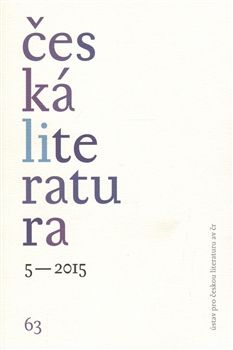Kafkovy překlady za života (1909–1922)
Kafka translations during his lifetime (1909–1922)
Author(s): Jiří Soukup, Silvia Szarková, Lucie MittnerováSubject(s): Language and Literature Studies, Studies of Literature, Czech Literature
Published by: AV ČR - Akademie věd České republiky - Ústav pro českou literaturu
Keywords: Kafka Franz; translation; Jesenská Milena; Illová Milena; Dohnal Jaroslav; Márai Sándor; Meyer Håkon
Summary/Abstract: During his lifetime, translations of Franz Kafka’s texts were published in three languages: Czech, Hungarian and Norwegian. This study examines and compares all these early Kafka translations within the context of these three linguistic and cultural-literary circles, as well as the various ways the first translators came to translate Kafka’s prose works, the context of their personal relations (or lack thereof) with Kafka, the specific nature of their translations, the circumstances surrounding their publication and the influence on Kafka’s work and subsequent reception. In the section on Czech translations (1909–1922) Jiří Soukup deals first with the anonymous translations of Kafka’s official articles — the first ever translations of Kafka’s texts, which were based on the Czech versions of annual reports (and one anniversary report) for the Workers’ Accident Insurance Company in Prague between 1909 and 1916. Attention is subsequently focused primarily on translations by Milena Jesenská, which came out in 1920 and 1922 under the titles Topič (The Stoker), Nešťastný (Unhappiness), Z knihy prósy (From a Book of Prose), Zpráva pro Akademii (A Report to an Academy) and Soud (The Judgment) in the periodicals Kmen, Tribuna and Cesta. Additionally, a translation by Milena Illová came out under the title Před zákonem (Before the Law) in the Právo lidu daily. At the end of 1922 a translation by Jaroslav Dohnal came out in the Tribuna daily under the title Závodníkům na uváženou (Reflections for Gentlemen-Jockeys), the last to be published in Kafka’s lifetime. Silvia Szarková subsequently focuses primarily on Hungarian translations of Kafka’s prose works Metamorphosis (A változás), The Judgment (Az itélet) and A Fratricide (A gyilkosság) by Sándor Márai, which were published in 1921 in the Košice dailies Szabadság and Kassai Napló. Lastly, Lucie Mittnerová deals with the Norwegian translation of Kafka’s prose work A Fratricide (Mordet) by Håkon Meyer, which was published in 1922 by the Mot Dag magazine. A comparison of these translations reveals the difference in translation strategies and Kafka’s reactions to them, while the identification of these early translations in the present study is not understood to apply to isolated cases of Kafka’s works being transferred into other languages, but in aggregate to involve the sphere of all translations of Kafka’s works, the context of which he perceived, and which were reflected back into his work. The study also comes together with a bibliography of these translations.
Journal: Česká literatura
- Issue Year: 63/2015
- Issue No: 5
- Page Range: 672-706
- Page Count: 35
- Language: Czech

